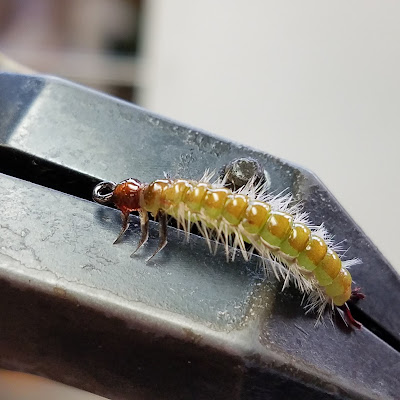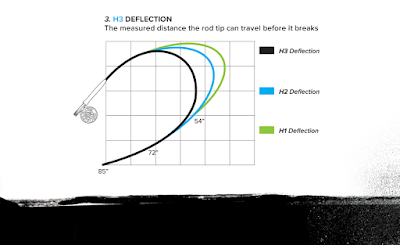Rhyacophilidae, Fishable Realistic Caddis Larva
The Rhyacophilidae are a family in the insect order of Trichoptera, which are commonly known as caddisflies. Larvae of this family are in the free living behavioral group and most species are predatory. The largest genus is Rhyacophila, with nearly 500 species distributed throughout the Northern Hemisphere. One important morphological characteristic is many Rhyacophilidae have a gill structure located on the lateral sides of the abdominal wall.
Select 2 Ostrich barbs.
Secure one Ostrich barb on each side of the hook (these will imitate the gill structure).
Cut the Nymph Skin at an angle and secure ahead of the Ostrich barbs.
Select your waterproof marker (I mostly use Kurecolor or Chartpak markers).
Move the thread bobbin holder to the eye and stretch the Nymph Skin before you mark it.
Palmer the Nymph Skin to behind the eye and secure it in place with the bobbin holder at the eye.
Remove the bobbin holder at the eye.
Secure the Ostrich in place at each segment of the abdomen using the UNI Mono Thread.
Repeat the process all the way to the rear of the last segment at the front.
Cut the excess Ostrich.
Prepare 2 of the barbs, one from each side, to create the rear legs.
Using a pair of tweezers, secure one leg in place with the UNI Mono Thread.
Secure the second rear leg in place on the opposite side.
Repeat the process for the first center leg.
Secure in place.
Repeat for the other center leg.
Prepare and secure the forelegs in place.
Last of the 6 legs.
VIOLA!
At this point, remove the excess barb material from the fly.
Choose a brown toned (your choice) marker to mark the head and back plates.
Be careful not to run the marker along the ostrich or it will soak up the color of the marker.
Coat the head with the UV Resin.
Repeat the process with the next few segments.
Cure for at least 15 seconds.
For added durability, put the UV Resin on a micro brush and mark down the back of the fly.












































